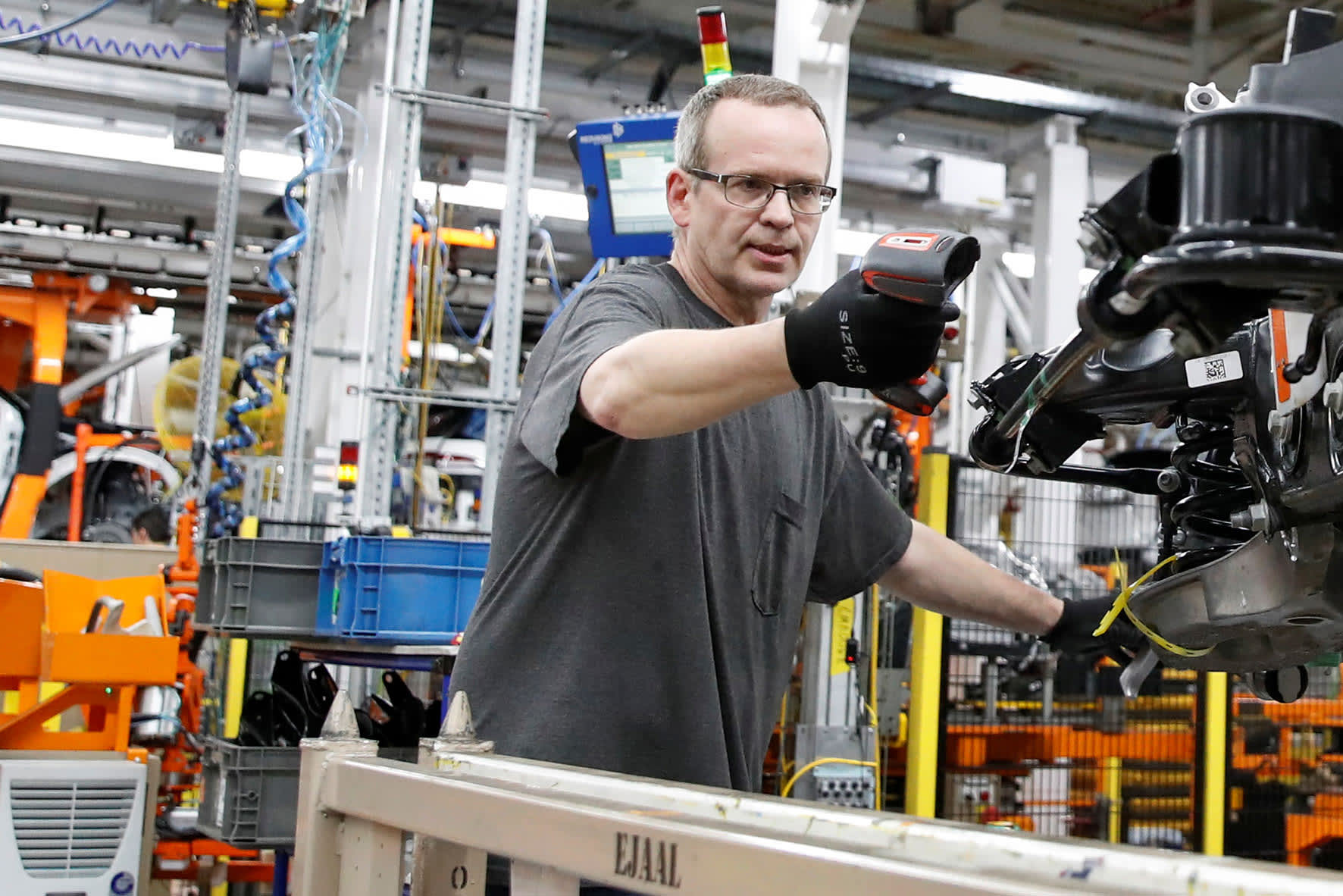
A worker builds a 2020 Ford Explorer car at Ford’s Chicago Assembly Plant in Chicago, Illinois, June 24, 2019.
Kamil Krzaczynski | Reuters
The U.S. economy grew moderately in the fourth quarter, the government confirmed on Thursday, and is facing a bumpy road in early 2020 amid the fast-spreading deadly coronavirus that has roiled financial markets.
Gross domestic product increased at a 2.1% annualized rate, supported by a smaller import bill, the Commerce Department said in its second estimate of fourth-quarter GDP. That was unrevised from last month’s advance estimate and matched the growth pace logged in the July-September quarter.
The economy grew by an unrevised 2.3% in 2019, the slowest annual growth in three years and missing the Trump administration’s 3% growth target for a second straight year.
Financial markets have been spooked by fears that the coronavirus, which has killed more than 2,000 people, mostly in China, and spread to other countries, could undercut the longest U.S. economic expansion on record, now in its 11th year.
Risky assets such as stocks have been sold off in favor of safe-haven government bonds. Money markets have boosted their bets on the prospect of more Federal Reserve interest rate cuts. The U.S. central bank cut rates three times last year and has signaled its intention to keep monetary policy on hold at least through 2020.
Though there is so far no real evidence that the coronavirus epidemic is impacting the U.S. economy, economists expect the struggling manufacturing sector to take a hit through supply chain disruptions and exports. Pain for the services sector could come via the travel and tourism industry.
The stock market sell-off, if it persists, could erode consumer confidence and hurt consumer spending, which is already slowing. Economists also worry that corporate profits could come under pressure and lead to layoffs and a slowdown in hiring. The labor market is the economy’s main pillar of support.
President Donald Trump on Wednesday assured Americans the risk from coronavirus remained “very low,” and said public health officials were preparing to do “whatever we have to,” to deal with the outbreak.
Despite the unrevised reading to last quarter’s GDP growth, which was in line with economists’ expectations, consumer spending slowed more than previously reported. There were also downgrades to business investment and government spending. That offset upward revisions to investment in homebuilding and inventory accumulation.
Excluding trade, inventories and government spending, the economy grew at a 1.3% rate in the fourth quarter, the slowest in four years. This measure of domestic demand was previously reported to have risen at a 1.4% pace in the fourth quarter.
Business investment fell at a steeper 2.3% rate in the fourth quarter, instead of the previously reported 1.5% pace. It was the third straight quarterly decline and the longest such stretch since 2009. There were downward revisions last quarter to spending on equipment.


